My
List |
Addition Date
|
Target
|
Mission
|
Instrument
|
Size
|

|
2004-02-03 |
|
Hubble Space Telescope
|
WFPC2
|
1065x771x3 |
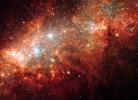
|
-
PIA05202:
-
Supernova Blast Bonanza in Nearby Galaxy
Full Resolution:
TIFF
(2.467 MB)
JPEG
(177.7 kB)
|

|
2003-07-03 |
|
Hubble Space Telescope
|
WFPC2
|
2603x2783x3 |

|
-
PIA04609:
-
Celestial Fireworks
Full Resolution:
TIFF
(13.8 MB)
JPEG
(871.3 kB)
|

|
2003-05-27 |
|
Hubble Space Telescope
|
WFPC2
|
612x792x3 |

|
-
PIA04533:
-
The Red Rectangle
Full Resolution:
TIFF
(870.7 kB)
JPEG
(38.33 kB)
|

|
2003-05-21 |
|
Hubble Space Telescope
|
WFPC2
|
869x444x3 |
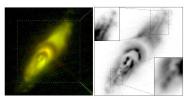
|
-
PIA04277:
-
Hubble's View of a Dying Star
Full Resolution:
TIFF
(635.3 kB)
JPEG
(42.81 kB)
|

|
2003-02-11 |
Dumbbell Nebula
|
Hubble Space Telescope
|
WFPC2
|
1262x750x3 |
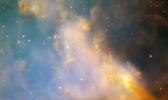
|
-
PIA04249:
-
Close-up of M27, the Dumbbell Nebula
Full Resolution:
TIFF
(2.843 MB)
JPEG
(75.6 kB)
|

|
2000-02-03 |
|
Hubble Space Telescope
|
WFPC2
|
2292x1480x3 |
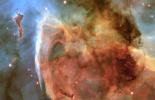
|
-
PIA14444:
-
Light and Shadow in the Carina Nebula
Full Resolution:
TIFF
(10.18 MB)
JPEG
(419.5 kB)
|

|
1999-12-30 |
Edge-on Galaxy ESO 510 G13
|
Hubble Space Telescope
|
WFPC2
|
1435x732x3 |
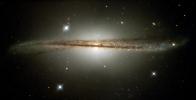
|
-
PIA04213:
-
Edge-on Galaxy
Full Resolution:
TIFF
(2.843 MB)
JPEG
(100.8 kB)
|

|
1999-12-15 |
Galaxy NGC 4013
|
Hubble Space Telescope
|
WFPC2
|
1041x1018x3 |
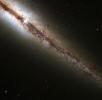
|
-
PIA04217:
-
Galaxy NGC 4013
Full Resolution:
TIFF
(2.811 MB)
JPEG
(74.83 kB)
|

|
1999-12-10 |
Hubble -V
|
Hubble Space Telescope
|
WFPC2
|
640x800x3 |

|
-
PIA04222:
-
Hubble-V
Full Resolution:
TIFF
(1.065 MB)
JPEG
(77.99 kB)
|

|
1999-12-10 |
Ant nebula
|
Hubble Space Telescope
|
WFPC2
|
1072x708x3 |
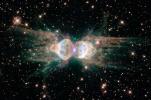
|
-
PIA04216:
-
Ant Nebula
Full Resolution:
TIFF
(2.008 MB)
JPEG
(143.4 kB)
|

|
1999-12-07 |
Galaxy NGC 3310
|
Hubble Space Telescope
|
WFPC2
|
849x933x3 |

|
-
PIA04229:
-
Starburst Galaxy NGC 3310
Full Resolution:
TIFF
(1.858 MB)
JPEG
(102.3 kB)
|

|
1999-12-04 |
Whirlpool Galaxy
|
Hubble Space Telescope
|
WFPC2
|
648x809x3 |

|
-
PIA04230:
-
Whirlpool Galaxy
Full Resolution:
TIFF
(1.575 MB)
JPEG
(84.45 kB)
|

|
1999-12-03 |
Ghost Head Nebula
|
Hubble Space Telescope
|
WFPC2
|
674x674x3 |
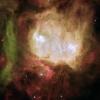
|
-
PIA04226:
-
Ghost Head Nebula
Full Resolution:
TIFF
(1.364 MB)
JPEG
(49.94 kB)
|

|
1999-12-03 |
N44C nebula
|
Hubble Space Telescope
|
WFPC2
|
1460x1502x3 |

|
-
PIA04225:
-
N44C Nebula
Full Resolution:
TIFF
(6.034 MB)
JPEG
(275.2 kB)
|

|
1999-12-03 |
Galaxy NGC 1850
|
Hubble Space Telescope
|
WFPC2
|
758x580x3 |
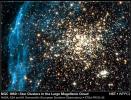
|
-
PIA04221:
-
Galaxy NGC 1850
Full Resolution:
TIFF
(1.321 MB)
JPEG
(140.6 kB)
|

|
1999-12-02 |
Rotten Egg Nebula
|
Hubble Space Telescope
|
WFPC2
|
843x794x3 |
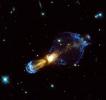
|
-
PIA04228:
-
Rotten Egg Nebula
Full Resolution:
TIFF
(818.3 kB)
JPEG
(56.88 kB)
|

|
1999-12-02 |
Orion Nebula
|
Hubble Space Telescope
|
WFPC2
|
1074x895x3 |
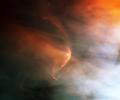
|
-
PIA04227:
-
Orion Nebula and Bow Shock
Full Resolution:
TIFF
(2.805 MB)
JPEG
(61.4 kB)
|

|
1999-12-02 |
Thackeray's Globules
|
Hubble Space Telescope
|
WFPC2
|
1480x1498x3 |

|
-
PIA04223:
-
Thackeray's Globules
Full Resolution:
TIFF
(5.8 MB)
JPEG
(177.7 kB)
|

|
1999-12-02 |
M82 Galaxy
|
Hubble Space Telescope
|
WFPC2
|
1487x1522x3 |

|
-
PIA04218:
-
Galaxy M82
Full Resolution:
TIFF
(5.39 MB)
JPEG
(187.4 kB)
|

|
1999-12-02 |
Galaxy NGC 3079
|
Hubble Space Telescope
|
WFPC2
|
2329x1845x3 |
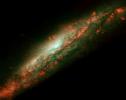
|
-
PIA04209:
-
Galaxy NGC 3079
Full Resolution:
TIFF
(5.519 MB)
JPEG
(351.2 kB)
|

|
1999-12-02 |
Galaxy NGC 3079
|
Hubble Space Telescope
|
WFPC2
|
434x434x3 |
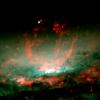
|
-
PIA04208:
-
Galaxy NGC 3079
Full Resolution:
TIFF
(305.3 kB)
JPEG
(22.15 kB)
|

|
1999-12-02 |
Stephan's Quintet,NGC 7319, NGC 7318B, NGC 7318A
|
Hubble Space Telescope
|
WFPC2
|
2400x3000x3 |

|
-
PIA04201:
-
Stephan's Quintet
Full Resolution:
TIFF
(12.15 MB)
JPEG
(521 kB)
|

|
1999-12-01 |
Globular cluster M4
|
Hubble Space Telescope
|
WFPC2
|
1100x1237x3 |

|
-
PIA04231:
-
White Dwarf Stars
Full Resolution:
TIFF
(3.34 MB)
JPEG
(279.1 kB)
|

|
1999-12-01 |
Galaxy NGC 4622
|
Hubble Space Telescope
|
WFPC2
|
853x970x3 |

|
-
PIA04224:
-
Backwards Spiral Galaxy
Full Resolution:
TIFF
(2.485 MB)
JPEG
(97.62 kB)
|

|
1999-12-01 |
Galaxy NGC 1512
|
Hubble Space Telescope
|
WFPC2
Faint Object Camera
Near Infrared Camera
Multi-Object Spectrometer
|
600x650x3 |

|
-
PIA04219:
-
Galaxy NGC 1512
Full Resolution:
TIFF
(972.2 kB)
JPEG
(50.1 kB)
|

|
1999-12-01 |
Horsehead Nebula
|
Hubble Space Telescope
|
WFPC2
|
853x620x3 |
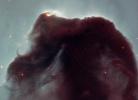
|
-
PIA04215:
-
Horsehead Nebula
Full Resolution:
TIFF
(1.405 MB)
JPEG
(48.75 kB)
|

|
1999-12-01 |
mysterious object
|
Hubble Space Telescope
|
WFPC2
|
3000x2400x3 |
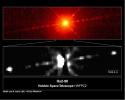
|
-
PIA04214:
-
Mysterious object He2-90
Full Resolution:
TIFF
(6.584 MB)
JPEG
(488.7 kB)
|

|
1999-12-01 |
Globular cluster M22
|
Hubble Space Telescope
|
WFPC2
|
514x600x3 |

|
-
PIA04202:
-
Globular Cluster M22
Full Resolution:
TIFF
(926.4 kB)
JPEG
(94.12 kB)
|

|
1999-12-01 |
Doradus Nebula
|
Hubble Space Telescope
|
WFPC2
|
2508x1790x3 |
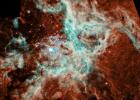
|
-
PIA04200:
-
Doradus Nebula
Full Resolution:
TIFF
(12.24 MB)
JPEG
(608.9 kB)
|

|
1999-01-06 |
|
Hubble Space Telescope
|
WFPC2
|
1215x1241x3 |

|
-
PIA14443:
-
Looking Down a Barrel of Gas at a Doomed Star
Full Resolution:
TIFF
(4.525 MB)
JPEG
(65.37 kB)
|

|
1996-01-16 |
|
Hubble Space Telescope
|
WFPC2
|
1280x1280x3 |
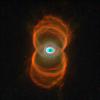
|
-
PIA14442:
-
Hubble Finds an Hourglass Nebula around a Dying Star
Full Resolution:
TIFF
(4.917 MB)
JPEG
(194.2 kB)
|

|
1996-01-15 |
|
Hubble Space Telescope
|
WFPC2
|
1771x1819x3 |

|
-
PIA12110:
-
Hubble Deep Field Image Unveils Myriad Galaxies Back to the Beginning of Time
Full Resolution:
TIFF
(9.679 MB)
JPEG
(1.226 MB)
|

 Planetary Data System
Planetary Data System















































